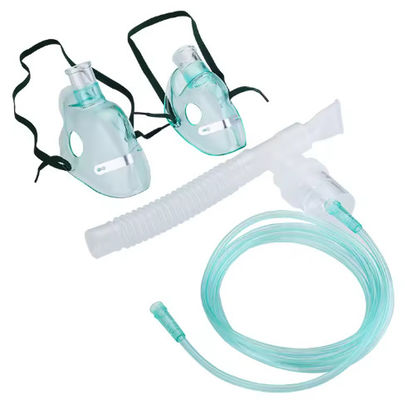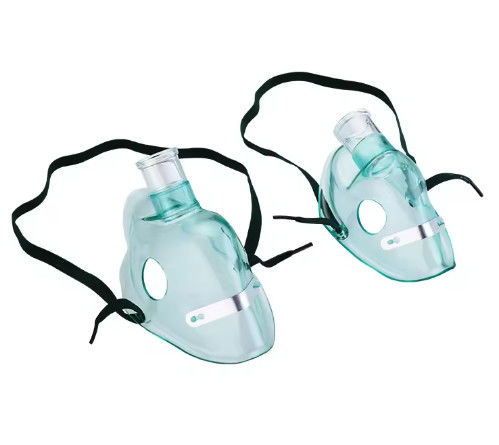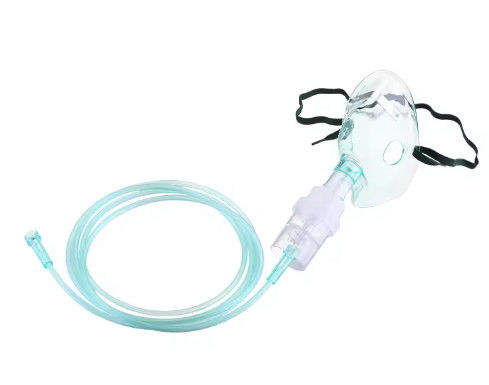
High Concentration Medical Sterile Adjustable Nebulizer Face Mask Pvc Nebulizer Mask Kit
-
Highlight
Adjustable Nebulizer Face Mask
,High Concentration Nebulizer Face Mask
,Pvc Nebulizer Face Mask
-
Place Of OriginChina
-
Disinfecting TypeEOS
-
SizeS/M/L/XL
-
StockNo
-
Shelf Life5 Years
-
MaterialMedical Grade PVC/PVC-DEHP Free
-
Quality CertificationCE
-
Instrument ClassificationClass II
-
PropertiesMedical Materials & Accessories
-
Product NameNebulizer Mask
-
CertificateCE/ISO
-
SterileEO Sterilization/non-sterilization
-
ColorTransparent/Green
-
ApplicationHospital/Clinic
-
FeatureAdjustable Soft Flexible
-
SpecificationMask Type With Nebulizer Cup Of 6ml
-
PackingSterilized Plastic Paper Pouch Or Blister Packing
-
KeywordNebulizer With Mask
-
Place of OriginChina
-
Brand NameHenan
-
CertificationCE
-
Model NumberCan be Customized
-
Minimum Order Quantity5000pcs
-
PriceNegotiable
-
Packaging DetailsIndividual Packaging
-
Delivery Time24-30 days
-
Payment TermsL/C, T/T, Western Union
-
Supply Ability50000000pcs per month
High Concentration Medical Sterile Adjustable Nebulizer Face Mask Pvc Nebulizer Mask Kit
High Concentration Medical Sterile Adjustable Nebulizer Face Mask Pvc Nebulizer Mask Kit
Product description
Material: Nebulizer masks are typically made of medical-grade PVC or clear, soft vinyl material that is comfortable against the skin and transparent for easy monitoring.
Design: These masks are designed to be lightweight, flexible, and contoured to fit securely over the nose and mouth, ensuring an effective seal during nebulization treatments.
Size Options: Available in various sizes to accommodate both pediatric and adult patients, with adjustable elastic straps for a customized and secure fit.
![]()
Key Features:
- Compatibility: Nebulizer masks are compatible with most standard nebulizer systems and compressors, allowing for efficient delivery of aerosolized medications.
- Flexibility: The soft and pliable material of the mask contours to the face, providing a comfortable fit and minimizing air leakage during treatment.
- Transparent Design: The clear design of the mask allows healthcare providers to observe the patient's facial expressions and monitor for any signs of distress during nebulization.
- Oxygen Tubing Connector: Nebulizer masks feature an oxygen tubing connector that easily attaches to oxygen sources, ensuring the patient receives the appropriate oxygen concentration during treatment.
- Elastic Straps: Adjustable elastic straps secure the mask in place without causing discomfort, allowing for a snug and customized fit for each patient.
- Latex-Free: Most nebulizer masks are latex-free, reducing the risk of allergic reactions in patients with latex sensitivities.
Benefits:
- Effective Medication Delivery: Nebulizer masks facilitate the delivery of aerosolized medications directly to the patient's airways, making them an effective treatment option for respiratory conditions such as asthma, COPD, and bronchitis.
- Comfortable and Secure Fit: The contoured design and adjustable straps ensure a comfortable and secure fit, minimizing air leakage and optimizing medication delivery.
- User-Friendly: Nebulizer masks are easy to use and can be quickly assembled for nebulization treatments in clinical settings or at home.
- Versatile: Suitable for use with a wide range of nebulized medications, including bronchodilators, corticosteroids, and mucolytics, making them versatile for various respiratory conditions.
- Disposable and Reusable Options: Nebulizer masks are available in both disposable and reusable options, providing flexibility based on patient needs and treatment protocols.
In summary, nebulizer masks are essential components of nebulizer systems, offering a comfortable and efficient means of delivering aerosolized medications to patients with respiratory conditions, ensuring effective treatment and improved respiratory function.
Application
- Respiratory Treatments: Nebulizer masks are commonly used in the treatment of various respiratory conditions such as asthma, chronic obstructive pulmonary disease (COPD), bronchitis, cystic fibrosis, and respiratory infections. They facilitate the delivery of bronchodilators, corticosteroids, antibiotics, and other medications directly to the lungs.
- Acute Respiratory Distress: Nebulizer masks are utilized in emergency and critical care settings to administer rescue medications quickly to patients experiencing acute respiratory distress, such as severe asthma attacks or exacerbations of COPD.
- Chronic Respiratory Management: Patients with chronic respiratory conditions often use nebulizer masks as part of their daily management routine to control symptoms, reduce inflammation, and improve lung function over the long term.
- Home Care: Nebulizer masks are commonly prescribed for home use, allowing patients to self-administer nebulized medications as part of their treatment plan under the guidance of healthcare providers.
- Pediatric Care: Nebulizer masks are particularly useful in pediatric care for delivering medications to young children who may have difficulty using inhalers effectively. The masks provide a more straightforward and efficient way to administer medications to infants and children.
- Elderly Care: Nebulizer masks are also beneficial for elderly patients who may have limited dexterity or coordination, making it easier for them to receive respiratory medications effectively.
- Palliative Care: In palliative care settings, nebulizer masks can help manage symptoms such as shortness of breath and respiratory distress in patients with advanced illnesses, providing comfort and relief.
- Postoperative Care: Nebulizer masks are used postoperatively to help prevent complications such as atelectasis (lung collapse) by delivering medications directly to the lungs and promoting effective airway clearance.
FAQ
1.What mask is used for nebulizer?
Nebulizer Mask
A nebulizer mask looks and is very similar to a regular oxygen mask commonly used in the hospital. Unlike a mouthpiece, it covers the mouth and nose and is usually held onto the face using an elastic band.
2.What are the disadvantages of a nebulizer mask?
Disadvantages:
The cost of treatment goes up considerably. ...
There are chances of carrying the infection from unsterile chambers or tubings into the lungs, especially with long term use.
A lot of drug is wasted – that vapour which is coming out from the side.
3.Which is better, a nebulizer mask or a mouthpiece?
In general, using a nebulizer with a mouthpiece is more efficient than with a facemask. Switching from a facemask to a mouthpiece should be considered by age three. Children younger than age three may have difficulty keeping the mouthpiece in their mouth.
4.What is the difference between a nebulizer and a mask?
Nebulizers are electric- or battery-powered machines that turn liquid asthma medicine into a fine mist. This mist comes through a tube that is attached to a mouthpiece or facemask. (A facemask is a kind of plastic cup that covers the mouth and nose.)
5.Is it okay to use nebulizer without a mask?
During a nebulizer treatment, a well-fitting, properly-placed mask to the face is required in a quietly breathing, younger patient who is not crying. An older, cooperative child may use a T-piece with mouthpiece.



